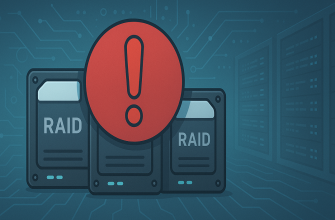- Behind the Scenes: Setting Up a Private Git Server on a VPS
- Why Host a Private Git Server?
- Step 1: Choosing the Right VPS
- Step 2: Installing Git on Your VPS
- Step 3: Creating a Git User and Repository
- Step 4: Pushing Code to Your Private Server
- Step 5: Adding Team Members
- Step 6: Securing Your Git Server
- Bonus: Add a Web Interface
- Final Thoughts
Behind the Scenes: Setting Up a Private Git Server on a VPS
In an era where code privacy, version control, and self-reliance are more important than ever, setting up your own private Git server on a VPS (Virtual Private Server) is a powerful move. Whether you’re a solo developer or running a small team, hosting your own Git server gives you full control, enhanced security, and complete ownership of your repositories.
In this article, we’ll walk you through everything you need to know — from choosing the right VPS to configuring your Git server and accessing it securely. Let’s go behind the scenes.
Why Host a Private Git Server?
There are plenty of services like GitHub, GitLab, and Bitbucket — but they all store your code in the cloud under their terms. Here’s why a private Git server on a VPS might be the better choice:
Enhanced privacy and data ownership
No dependency on third-party platforms or pricing models
⚙️ Full customization and control
Ideal for private projects or sensitive enterprise-level development
Step 1: Choosing the Right VPS
Look for a VPS that provides:
- Root or sudo access
- At least 1 CPU and 1 GB RAM
- SSH support
- Stable uptime and bandwidth limits that suit your project
Step 2: Installing Git on Your VPS
Connect to your VPS via SSH and run the following:
sudo apt update
sudo apt install git
Then set your global Git configuration:
git config --global user.name "Your Name"
git config --global user.email "your@email.com"
Step 3: Creating a Git User and Repository
Create a dedicated user for Git:
sudo adduser git
Then switch to the Git user and create a bare repository:
cd /home/git
mkdir myproject.git
cd myproject.git
git init --bare
This will act as your central remote repository.
Step 4: Pushing Code to Your Private Server
On your local machine:
git remote add origin git@your-vps-ip:/home/git/myproject.git
git push -u origin master
Make sure your SSH key is added to the server for seamless authentication.
Step 5: Adding Team Members
Ask each team member for their public SSH key. Add each key to the Git user’s ~/.ssh/authorized_keys file. This gives them secure access to the repo without needing a password.
Step 6: Securing Your Git Server
Follow basic security best practices:
- Enable and configure a firewall (e.g. UFW)
- Disable root login over SSH
- Keep your system updated
- Monitor logs for unauthorized attempts
Bonus: Add a Web Interface
Want more features like web-based repository browsing, issue tracking, and collaboration tools?
- Gitea – Lightweight and easy to deploy
- GitLab (self-hosted) – Full-featured DevOps platform
These can be layered on top of your private Git server for extra functionality.
Final Thoughts
Running a private Git server on your own VPS gives you unmatched control, privacy, and flexibility. Whether you’re working solo or with a team, it’s a scalable and secure solution that puts your code fully in your hands.









